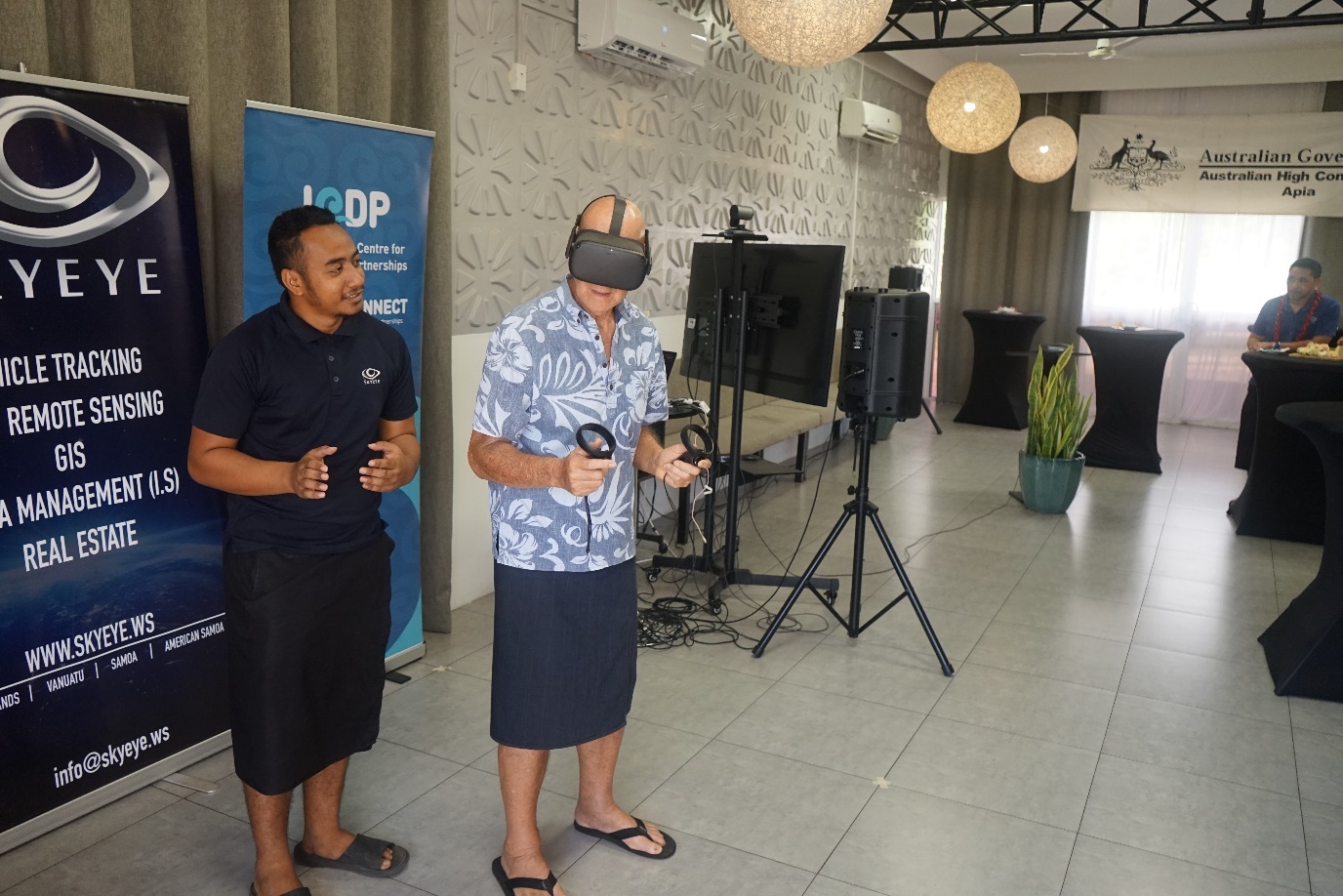Futuristic project preserves history
 By Adel Fruean
•
29 May 2021, 11:00AM
By Adel Fruean
•
29 May 2021, 11:00AM
A futuristic project using cutting-edge virtual reality technology to recreate a “virtual village” to preserve the history and culture of Samoan village life was launched on Friday at The Hub, Lotopa.
“Shifting Homes” aims to bring an ancient village back to life through the power of virtual reality and presenting visitors with an immersive experience about the nature of traditional Polynesia.
The project is the product of a collaboration that brought together the work of Samoan tech developers in collaboration with Information Technology companies in conjunction with international donors, including the Australian Government. Several Samoan contributors benefited from undergoing and completing training in augmented reality training used in the project.
By underscoring the threat posed by climate change Shifting Homes also seeks to emphasise the urgency of the issues.

Some of the speakers at the project launch included representatives from the company involved in overseeing the project’s virtual reality elements: DP Immersive.
Addressing those attending were Tuatagaloa Joe Annandale; Daniel Stricker, Director DP Immersive (virtual); and Fa'aso'otauloa Sam Saili, Chief Executive Officer of SkyEye.
The Deputy Australian High Commissioner to Samoa, Barry Patterson congratulated DP Immersive, in partnership with The Hub, SkyEye, the Ministry of Communication and Information Technology, and the National University Samoa, on being selected to represent Australia and the Pacific at this year’s La Biennale di Venezia of Architecture.
The Pacific Connect programme is an initiative designed to boost relationships between Pacific and Australian leaders across the Government and public sector through digital innovation.
“As we are still experiencing worldwide travel restrictions due to COVID-19, today’s event is part of a global launch with New York and Australia to unveil the Shifting Homes exhibit that was chosen for the 17th Venice Architecture Biennale,” he said.

Mr. Patterson said another exhibit selected from Australia is entitled INBETWEEN, which explores Indigenous design and co-authorship, exploring the power of architecture to build connections and understanding between Australian indigenous culture and the Pacific.
“The training was vital in teaching what will soon become commonly used technology in everyday life, such as scanning and photogrammetry, and the creation of digital projects by use of the virtual and augmented reality know-how," he said.
“We are proud to support the ‘Shifting Homes’ project through Pacific Connect—a program funded by the Australian Government and implemented by the International Centre for Democratic Partnerships—designed to forge stronger, strategic-level relationships between Pacific and Australian leaders across government, business, and community groups.
“This is exactly what we saw throughout the creation of Shifting Homes – that we are more effective when we work closely with others, burden sharing, engaging in dialogue, and recognising and responding to each other’s strengths.”
He said Pacific Connect delivers on Australia’s Pacific "Step-Up" foreign policy as a tool for fostering people-to-people links across the Pacific by fostering the mutual exchange of ideas, culture and cooperative support.
“Samoa has been a strong supporter and beneficiary of the program, hosting the Digital Pacific Regional Conference, delivered with the Government of Samoa and UNDP in Samoa in June 2018, and the Creative Industries Dialogue in May 2019 – which was where Shifting Homes started to come to life.
“With COVID-19 still in play, virtual and augmented reality represents a new era of human engagement technology — technology that has kept us connected when we cannot physically come together.”
He added that virtual reality also creates opportunities for the digitisation of Samoan stories and culture, both to preserve them for future generations, and to take Samoa to the world at a time when the world cannot physically travel to Samoa.
“Pacific Connect uses a unique ‘Second Track’ methodology, which encompasses the Pacific concept of talanoa, bringing together community leaders, entrepreneurs and business and government stakeholders to discuss shared interests and identify potential opportunities," Mr. Patterson said.
“Over the last several years Pacific Connect has held a series of dialogues – and provided follow-up mentoring and support – to unearth these opportunities, using digital and online tools to reach and connect stakeholders across the Pacific.
“The Samoan village, specifically Poutasi, has been brought to life, simulating the impact of climate change, and promoting cultural understanding between Samoa and the world.”
The Deputy Australian High Commissioner to Samoa also said that Australia is committed to ambitious and practical action to combat the impacts of climate change at home, in our region, and around the world
He said that earlier this month the Australian Government committed to another 10-year partnership with the Secretariat of the Pacific Regional Environmental Program (S.P.R.E.P.) to address ocean pollution and build climate and disaster resilience within the Pacific.
 By Adel Fruean
•
29 May 2021, 11:00AM
By Adel Fruean
•
29 May 2021, 11:00AM






